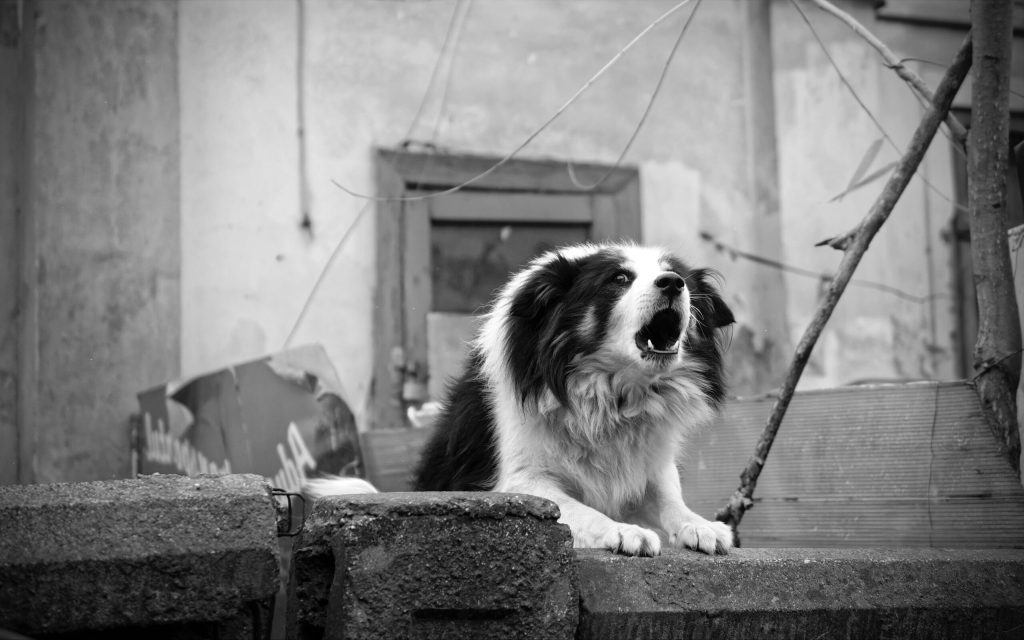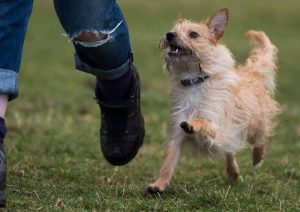Get an awesome recall. Join my 30 day, step by step program now...
Why a doggy door could be making your dogs behaviour worse!
Many people get a doggy door installed to make their lives and training easier. But, all too often, they end up making things worse. Especially when it comes to house training, territorial, and hyperactive behaviour. Here’s why that happens, and why I don’t recommend them.
What is it?
A doggy door is basically a large cat flap. Most people install them in their back door so their dog can have free access to the garden. But you could put them into interior doors to give access to specific rooms. On the outset, they appear quite handy as they allow the dog to come and go as they please. They get to visit the garden for a toilet break when they need one, and they can play outside, and get fresh air when they want it too.
Of course, that all sounds ideal, but there are problems. And often they can exacerbate, if not create behaviour problems that are far worse than the problem you were trying to solve.
How can I help you with your dogs behaviour training?
Private Dog Behaviour Consultations are currently available online and in-person in Dundee and the surrounding area. If you are looking for help solving your dogs behaviour and training problems, please get in touch!
For pees and poos
A major reason to get a doggy door is to allow a dog free access to the garden. The belief is that if the dog has accidents in the house, it was because they weren’t able to get access to the garden at the right time, and that installing a flap will solve that problem. The reality is that the dog has either not fully learned to hold on until they get access to the garden, or they have toileted in the house due to anxiety or as part of a guarding ritual.
Toileting in the house is a typical sign of separation anxiety. The bladder and bowel are affected when a dog goes into a panic or emergency state. This causes them to have an involuntary pee or poo.
If a dog toilets in the house for territorial reasons, the doggy door won’t change anything. The location of territorial pees has been chosen carefully by the dog. What might happen though is that the dog starts scent marking in locations in the garden as well as inside. This will reinforce any territorial behaviour, but we’ll come to that in a minute…
If it’s separation anxiety, the dog will be focused on the last place they saw you when you left. This is usually the front door, or the kitchen door. This is the place they will wait and worry the most. So most separation anxiety related behaviour happens here too. This could be chewing, scratching and of course, it is also the place they will have a bowel or bladder accident too.

In housetraining
If it is a simple house training problem, then it’s more likely that the dog just hasn’t fully learned where to go yet. If the dog didn’t know to hold on and go outside when you open the main door, then he won’t think to go through the little door either. Getting a doggy door could even make things worse. If the dog is still in the learning phase then you need to make sure you are watching them constantly. This will allow you to reward them every time they get it right. It also means you’ll catch them and redirect them if they make a mistake.
This way, it will soon become very clear what behaviour gets a reward and what doesn’t. When you introduce a doggy door you end up with a situation where you will miss most of it, good choices go unnoticed, as do bad choices and the dog becomes less and less clear about what is good and what isn’t. If you aren’t rewarding 80-90% of good choices you might struggle to make progress long term and create a new habit that can be relied upon.
The territorial dog
Some people prefer to use a doggy door because they believe their dog prefers to be outside. But if your dog is sticking to the boundaries, barks at the slightest sound, objects to the neighbours using their gardens, scent marks the fences and walls, or is generally a busy dog in the garden, then it is more likely he is patrolling the territory, than just enjoying a bit of fresh air. He might even do all these behaviours in the house too. Giving him free access to the garden just makes the problem worse, as you aren’t even there to discourage it.
So what started off as a bit of barking at the window or door bell, has quickly escalated into a full time (and stressful) job for your dog. There is no respite, and this will only get worse until one day your dog will be stopping people coming in – as per his job description. His barking will also get worse as he has access to the bark garden and you’ll find him running in and out barking at everything that moves or makes a noise. Barking in the garden is more of a nuisance than when it’s contained inside, and you’ll soon attract complaints from the neighbours if this is your dog.
The hyper dog
You might decide to get a doggy door to create more space for a hyperactive and busy dog. If a dog is constantly active, you might be forgiven for thinking that allowing them to explore and play outside might help. However, it is more likely to do the opposite. More space is actually more stimulating, especially if it’s outside as there are extra noises to respond to, birds to chase, holes to be dug, and loads more. This type of stimulation is addictive and self propelling so rather than make things better, unrestricted access to the garden through the doggy door could actually make a dog more hyperactive and reactive.
The best way to solve hyperactive behaviour is to use smaller spaces and reduce the amount of stuff the dog has access to. This will allow them to get bored and settle.
How can I help you with your dogs behaviour training?
Private Dog Behaviour Consultations are currently available online and in-person in Dundee and the surrounding area. If you are looking for help solving your dogs behaviour and training problems, please get in touch!
How can I help you with your dogs behaviour training?
Private Dog Behaviour Consultations are currently available online and in-person in Dundee and the surrounding area. If you are looking for help solving your dogs behaviour and training problems, please get in touch!


